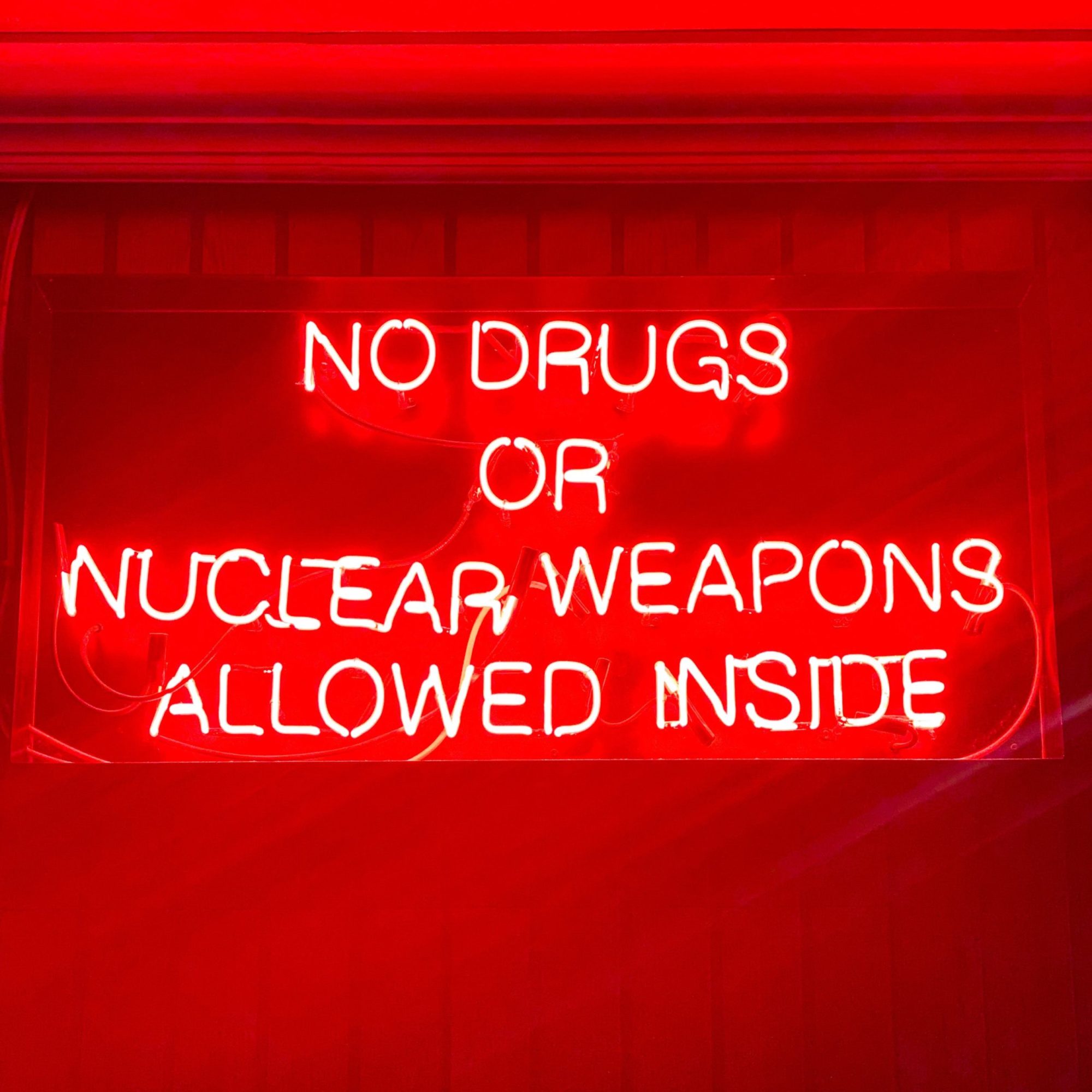A common dictate of contemporary culture is that we should question our assumptions. Decision-making and problem-solving are, we are told, best approached by laying bare our prejudices, by challenging our beliefs and self-interest, and by imagining the world through other eyes. These are indeed worthy aims. And for those of us practiced in the art of technocratic process, with all its stolid and mind-narrowing procedure, it represents an emancipatory — if not redemptive — mode of thought. A welcome reprieve from debilitating groupthink, from suffocating sameness.
This embrace of broadmindedness has even managed to find its way into the insular world of nuclear policy. A community not traditionally sympathetic to outside viewpoints. N Square Collaborative — an initiative of several large institutional funders — is one such laudable effort, aimed at engaging new audiences by widening the pool of perspectives confronting the existing nuclear architecture. An architecture comprised of international treaties and institutions, of agreements and verification: and, at its very heart, sovereign nation-states. And it is here that a seemingly unshakable assumption persists. One long overdue for a reckoning. The belief—sacrosanct within think tank and policy circles—in the inviolability of the nation-state.
Following the Trump Administration’s withdrawal from the Intermediate Nuclear Forces (INF) treaty and the potential abandonment of New START — the sole remaining arms limitation treaty — there has been considerable conjecture and concern about the future of the nuclear order. And while much of this unease has been expressed by policymakers and researchers troubled by the prospect of a renewed arms race, others worry about the implications for the wider goal of abolishing the weapons altogether. Getting to zero seems more distant and improbable than it did a generation ago.
The danger of rearmament looms large, but abolitionists have nonetheless enjoyed recent success. The Treaty on the Prohibition of Nuclear Weapons (or Ban Treaty) signed by 81 countries, a Nobel prize for the International Campaign to Abolish Nuclear Weapons (ICAN) and the support of prominent individuals like billionaire Richard Branson have all given hope to those seeking an end to the nuclear threat. But while current disarmament efforts are undoubtedly praiseworthy, their success in the long term remains reliant on how the state itself evolves. The Ban Treaty is a significant milestone toward abolition, but it remains an agreement of nation-states, an institution which, as a growing body of evidence — including history itself — suggests, may well be passed its prime.
THE BOMB AND THE STATE — ONE AND THE SAME
The Manhattan Project of the 1940s developed the world’s first nuclear weapons. Its success was dramatically revealed to the world in August 1945 by the devastation of Hiroshima and Nagasaki. While the outlines of this story are widely known, less well known perhaps is the sheer scale of the scientific and industrial firepower that lay behind it: 130,000 employees across 30 sites in three countries, 17 Nobel Laureates, and some of the largest physical infrastructure ever constructed. The project was, as one commentator has described, “a full-stop on modernity.” An achievement only matched in 1969 when Neil Armstrong stepped upon the surface of the moon. But above all, the development of nuclear weapons represented the triumph of the nation-state. Indeed, it is difficult to conceive of an entity other than the mid-century state having the technical and economic wherewithal to tame the atom. To consider such an immense and collective undertaking in light of the contemporary state’s crippling aversion to grand projects — whether infrastructure, space exploration or welfare provision — is enough to prove just how far the state has evolved in recent decades. Projecting that rate of change forward and accounting for the as yet unknown impact of quantum computing, artificial intelligence and other advancements — technological, political, economic, ecological — and it seems absurd to assume that our institutional arrangements and political geography will look the same in the decades and centuries to come. Our states and our relationship with them are bound to change.
The irony here being that the massive cost of maintaining and modernizing these archaic accouterments of national power is only hastening the demise of state legitimacy. More money for bombs means less money for hospitals, schools and social programs.
The traditional state-centric viewpoint is hardly surprising. After all, nuclear weapons and atomic energy have been the exclusive preserve of states since their conception. As technologies, they are bound inextricably to the state. Unlike what is today generally considered “technology” — digital, dispersed and detached from traditional authority — nuclear weapons are built by states, owned by states, controlled exclusively by states and, as such, singularly susceptible to whatever the state becomes. Recently, a number of prominent abolitionists have cited the evolutionary nature of technological development as a reason to believe that “nuclear weapons are certain to go away because human beings improve all our technology over time.” This is a rather specious argument which apart from skipping over obvious concerns about what it means to “improve technology” in the context of atomic weaponry, also overlooks the fact that intuitional arrangements are similarly prone to transformation. Understanding the potential trajectories of our political structures should thus be part of how we think about nuclear threats. But the closeted world of nuclear wonkery has too often succumbed to the pitfalls of methodological nationalism. Premising its research and policy prescriptions on assumptions about the static nature of the global order. Conceptual obsessions like deterrence, non-proliferation and arms-control are deeply connected to traditional notions of statehood and sovereignty. And on the rare occasions that this intellectual bandwidth broadens to include non-states threats such as nuclear terrorism, they are generally couched in terms of institutional safeguards and national security. Not as harbingers of systemic change.
In this sense nuclear arsenals can be viewed as kitsch holdovers from a bygone era. But while other cultural artifacts come and go as fashion and tastes evolve, atomic weapons remain dangerously rooted in outmoded notions of state supremacy. Political philosopher Michael Hardt has recently described the relationship between sovereignty and nuclear arsenals as an “intimate entanglement.” The one reinforcing and justifying the other. But rather than a mere blank canvas upon which supposedly neutral and rational concepts like mutually assured destruction and deterrence are inscribed, the weapons themselves underpin the thinking behind our institutional arrangements. Nuclear stockpiles may have outlived the political context from which they arose, but their continuing existence has served to prolong traditional concepts of sovereignty. As Hardt goes on to argue, “faith in the illusion of nuclear sovereignty is a symptom of the desperation of national sovereignty in its death throes.” As national authority wanes, political leaders hold ever tighter to the trappings of statehood; perhaps none more so than atomic weaponry. The irony here being that the massive cost of maintaining and modernizing these archaic accouterments of national power is only hastening the demise of state legitimacy. More money for bombs means less money for hospitals, schools and social programs. Harvard English Professor, Elaine Scarry, may well be right in arguing that “Nuclear weapons have persisted not because they resist dismantling, but because they have infantilized and miniaturized our political institutions.” But these neutered institutions endure and are propped up — at least partially — by narratives of power that belong to an entirely different world. Nuclear arsenals are not innocent artifacts but are instead complicit in defining the structure of the international system. Solving for nuclear weapons is thus largely reliant on solving for the nation-state.
All this begs the questions: why does the disarmament and arms control community continue to treat the institutional status quo as unalterable, even desirable? And why do we still view the problem of nuclear weapons exclusively through the prism of the existing international order? An obvious answer is that career progression, institutional inertia and the ever-present pressure of grant seeking all tend toward the perpetuation of the status quo. Another answer could be that a post-state world is simply unthinkable, that the world we have is the only one we have ever known and imagining another is difficult, perhaps nearly impossible. Behavioral psychology would nowadays label such thinking as normalcy bias, or the tendency to assume that the future will look very much like the past. But it is clear, particularly in light of our current circumstances, that this mode of thought is deeply flawed. The obvious gulf between societal expectations and the services provided by governments during the coronavirus crisis is further evidence of waning state authority. The fragility of our institutions — the very structures that frame our existence — have rarely been so starkly on display.
A STATELESS WORLD?
Contemplating the future is not as simple as merely assessing whether state authority is expanding or contracting. Even if a set of metrics could be found, their applicability would vary greatly. Any process of geopolitical change will necessarily be variegated and dependent on the interplay of local context and seemingly random events like the Arab Spring or our present pandemic. Just as there are wide variations in current versions of statehood, there will be no clear linear progression away from modern versions of sovereignty and toward some new and uniform model of organization. States themselves may very well survive but the playing-field of international politics could be littered with other near-equal players. These might include novel forms of international organization and subnational entities like megacities and devolved regions — think Scotland and Catalonia. The super wealthy and multinational corporations may likewise play a greater role in shaping our lives, addressing many of the problems we now rely solely on governments to solve. Other threats to the traditional state include increasing migration, the internet, trans-national religious ideologies, and global finance — all of which pay little heed to borders and are mostly beyond the reach of state authority.
Twentieth-century dystopian fiction has done much to shape our expectations of the future; a future usually conceived as illiberal and totalitarian. For George Orwell in his genre-defining 1984 these imagined worlds were the natural terminus of unfettered state power. But events have not quite worked out as he predicted in 1948 and based on many of the trends already visible it seems more likely that state influence will erode rather than consolidate in the years ahead. Yet far from being an easily discarded fringe perspective, the possibility of waning state authority was explored by the US National Intelligence Council’s 2012 Global Trends 2030 report. One of the four alternative future scenarios posited by the council included what it dubbed “nonstate world“ which as the authors explain is a world in which “nongovernmental organizations (NGOs), multinational businesses, academic institutions, and wealthy individuals, as well as subnational units, such as megacities, flourish and take the lead in confronting global challenges.” This is a future in which authoritarian leaders “preoccupied with asserting the primacy and control of the central government — find it hardest to operate.” This last point runs counter to the piles of recent literature dedicated to resurgent nationalism; a trend illustrated by the rise of atavistic leaders throughout the world. But as some have contended, this may merely represent the death throes of traditional models of statehood. The impotent thrashings of a caged animal. As novelist and essayist Rana Dasgupta argues “leaders are unable to deliver meaningful material change. Instead, they must arouse and deploy powerful feelings: hatred of foreigners and internal enemies, for instance, or the euphoria of meaningless military exploits.” This logic also applies to the burgeoning surveillance state in China and elsewhere which despite its apparent contrast to waning institutional influence, is driven by a similar process: ostensible omnipotence masking diminished authority. The fact is, states now have less reach and less leverage than a generation ago.
None of this suggests that proto-states or city-states or any other novel institutional entities are about to materialize and start building nuclear weapons. Nor is it a suggestion that contemporary arms limitation and verification measures are futile or unnecessary. Rather it is to suggest that a less state-centered approach to disarmament may prove fruitful. One that recognizes that the nuclear present is inseparable from the nation-state’s past. And that if this fundamental unit of international politics continues to change, or diversify, or weaken irreversibly, then opportunities for transformative interventions may present themselves.
But how to prepare for such eventualities?
FACING UP TO THE FUTURE
One method that might prove useful is scenario planning, an approach to forecasting which grew out of military intelligence, statistical analysis and game theory. Given this shared intellectual heritage with deterrence theory, it is not surprising that the first recognized proponent of the approach — and founder of the Hudson Institute — Herman Kahn, used one of the earliest examples of scenario-based thinking to argue that a nuclear war could be fought and won. Yet despite these rather dubious origins the approach has evolved in more recent years away from its early reliance on reductionist mathematical modeling and become much less probabilistic. Contemporary scenarios are no longer exclusively about providing quantifiable forecasts, rather they act as a way to condition thought — a provocative prompt for self-reflection. Qualitative versions of scenario planning, pioneered in the 1970s by the oil and gas giant Shell, produce narratives that allow the reader to exercise their own judgment and agency. The process is participatory with decision-makers encouraged to think creatively, becoming a character in a story rather than merely a consumer of statistical forecasts. The aim is not to outwit uncertainty but to co-opt it, to “try and understand it and make it part of our reasoning.” Together with other forecasting methods, scenario planning informs decision making, long-term strategy and, perhaps most significantly, helps transcend the limitations imposed by the optimistic, steady-state biases that preclude a candid contemplation of the future.
As leading futurist Pierre Wack argued, scenarios challenge our “assumptions about how the world works.” The method therefore seems a necessary tonic for the state-obsessed world of nuclear policy. But scenarios could be used to not only question the continued viability of nation-states, but also to help analysts and advocates think beyond other rigidly held shibboleths. These include the very narrow conception of security which underpins deterrence, one that views national security as unquestionably preeminent. Scenarios could be used in this instance to imagine a plausible future wherein conceptions of security are not so tightly coupled to the state, and instead broadened to include transnational concerns about equality or the environment or global health. They may help experts better appreciate how nuclear threats are intimately connected to other issues; and how nuclear policy is not some special rarefied realm but deeply entwined with many other policy arenas. Forecasting may also be used to think past the outdated rational-actor model of human behavior which despite being considered intellectually bankrupt in many other fields, including economics from where it was originally drawn, still persists as the basis of deterrence.
Examples of scenario planning already exist in the nuclear field. Unsurprising, the majority remain rooted in the statist status quo. Typically, these efforts explore the multiple ways the world might end or how a local crisis could escalate to all-out war. These scenarios are certainly useful for threat reduction but can hardly light the way to a different future. A notable exception is the Crossroads scenarios produced by N Square in 2015. Through a series of five scenarios set in 2045, the report explores plausible pathways to a world without nuclear weapons. One of these, entitled “Emergency Management,” posits the creation of a novel transnational institution tasked with combating climate change. Membership of this organization is not limited to nation-states and includes “insurance, re-insurance and transnational finance groups.” This unique structure allows it to employ a range of unconventional financial and legal levers when it turns its attention to the task of nuclear dismantlement. When this goal is finally achieved, it is brought about through the inventive combination of moral, legal and economic forces. While this scenario is merely one of an infinite number of plausible futures, it serves as an imaginative thought experiment that could lead the arms control and disarmament community to identify potential leverage points and design innovative interventions. It might also lead to greater engagement with domains outside those usually considered relevant to the nuclear cause. A recent example of this in action is the Cross Capital Initiative created by N Square Fellow David Epstein. This initiative is aimed at encouraging investors and the financial community to engage in reducing the threat of nuclear weapons and other existential risks.
Scenario planning, when done well, points the way to action. And few could deny that the nuclear threat community is in need of transformative action. The current tendency to view the nuclear problem exclusively through the prism of the nation-state has led to a kind of intellectual stasis. The moment seems right to lay bare these assumptions. The world is changing, and the prospects for more change, whether prompted by technological innovation or global crises like COVID-19, appear very strong indeed. But to see beyond nuclear weapons and deterrence requires a deeper understanding of the ideological and institutional processes that brought them into the world — to understand how tightly coupled they are to the nation-state. And to recognize that this foundational element of the international system is changing and evolving in significant ways.
Where goes the state, so goes the bomb.
Peter Waring is a senior researcher at Ridgeway Information where he focuses on non-proliferation and international security. He also represents N Square in the United Kingdom. After a decade long career in the Australian Navy, he now calls London home – a far better locale for indulging his ongoing hunt for obscure vinyl.














